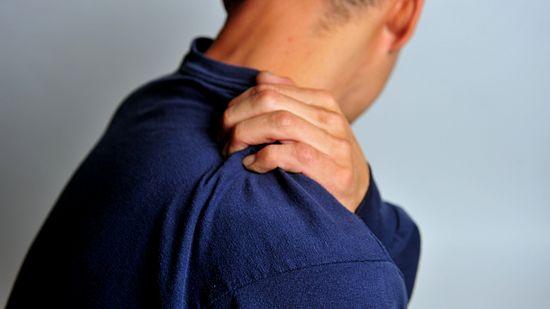How To Use Homeopathy For Musculoskeletal Pain And Injuries?

Musculoskeletal pain and injuries can significantly impact a person’s quality of life, causing discomfort and limiting their ability to perform daily activities. While traditional medical treatments are commonly used to manage these conditions, some individuals may seek alternative approaches such as homeopathy.
Homeopathy is a holistic system of medicine that aims to stimulate the body’s self-healing mechanisms. This article explores how to use homeopathy for musculoskeletal pain and injuries. It begins by explaining the principles of homeopathy and identifying the root cause of these conditions.
The article then discusses the process of choosing the right homeopathic remedies and applying topical treatments. Additionally, it highlights the importance of incorporating homeopathic supplements, practicing gentle exercises and stretching techniques, and seeking professional guidance from a homeopath.
Lastly, the article suggests integrating homeopathy with traditional medical treatments and monitoring and adjusting the homeopathic treatment plan as necessary.
Key Takeaways
- Homeopathy is an alternative approach for managing musculoskeletal conditions.
- Homeopathic remedies are chosen based on specific symptoms and characteristics, as well as the root cause of the pain and injuries.
- Integrating homeopathy with traditional medical treatments offers a holistic and personalized approach.
- Regular monitoring and adjustment of the homeopathic treatment plan is crucial for optimal results.
Understanding the Principles of Homeopathy
The principles of homeopathy provide a unique perspective on the treatment of musculoskeletal pain and injuries. Homeopathy is based on the concept of ‘like cures like,’ which means that a substance that can cause symptoms in a healthy person can be used to treat similar symptoms in a sick person. This principle is known as the law of similars.
Another important principle of homeopathy is the concept of individualization, which means that each person is unique and requires a personalized treatment approach. Homeopathic remedies are prepared through a process of dilution and potentization, which is believed to enhance their healing properties while minimizing any potential side effects.
These remedies are chosen based on the specific symptoms and characteristics of the individual, rather than the specific diagnosis of the condition. By addressing the underlying causes of musculoskeletal pain and injuries, homeopathy aims to stimulate the body’s innate healing abilities and promote long-term recovery.
Identifying the Root Cause of Musculoskeletal Pain and Injuries
Identifying the underlying cause of musculoskeletal discomfort and trauma is essential in order to effectively address and manage these conditions.
Homeopathy recognizes the importance of understanding the root cause of musculoskeletal pain and injuries in order to provide individualized treatment. Homeopathic practitioners believe that each person’s symptoms are unique expressions of an underlying imbalance or disturbance in the vital force.
By identifying the specific factors contributing to the discomfort or injury, such as repetitive strain, poor posture, or trauma, homeopaths can tailor the treatment approach accordingly. This may involve using specific homeopathic remedies known to address the root cause of the pain or injury, as well as addressing any underlying emotional or psychological factors that may be contributing.
By focusing on the root cause, homeopathy aims to promote overall healing and restore balance to the musculoskeletal system.
Choosing the Right Homeopathic Remedies
To effectively address and manage musculoskeletal discomfort and trauma, it is crucial to carefully select appropriate homeopathic remedies that target the specific underlying causes. Homeopathic remedies work by stimulating the body’s self-healing mechanisms, promoting balance and restoring health.
When choosing the right remedy for musculoskeletal pain and injuries, several factors need to be considered:
- Symptom similarity: Homeopathy focuses on matching the individual’s symptoms with those produced by the remedy. A thorough understanding of the specific symptoms experienced, such as the location, intensity, and character of the pain, is essential.
- Modalities: Paying attention to aggravating or ameliorating factors, such as movement, rest, or warmth, can help identify the most suitable remedy.
- Individualization: Each person’s experience of pain or injury is unique, and selecting a remedy that matches the individual’s overall constitution and emotional state is important.
By carefully considering these factors, homeopathy can provide targeted and effective relief for musculoskeletal pain and injuries.
Applying Topical Homeopathic Treatments
Applying topical homeopathic treatments can be a valuable approach in managing and alleviating discomfort and trauma associated with musculoskeletal conditions. These treatments involve the application of homeopathic remedies in the form of creams, gels, ointments, or oils directly to the affected area.
The rationale behind this approach is that the active ingredients in the homeopathic remedies can penetrate the skin and interact with the body’s natural healing mechanisms to promote relief and recovery.
Common topical homeopathic remedies used for musculoskeletal pain and injuries include Arnica montana, Rhus toxicodendron, and Bryonia alba. These remedies are believed to have anti-inflammatory, analgesic, and tissue-healing properties.
It is important to note that while topical homeopathic treatments may provide symptomatic relief, they should not substitute for appropriate medical evaluation and treatment for severe or chronic musculoskeletal conditions.
Incorporating Homeopathic Supplements into Your Routine
Incorporating homeopathic supplements into your daily routine can offer a holistic approach to managing and improving overall well-being. Homeopathic remedies are derived from natural substances and are believed to stimulate the body’s own healing mechanisms.
When it comes to musculoskeletal pain and injuries, certain homeopathic supplements have shown potential benefits. One such supplement is arnica montana, which is commonly used for its anti-inflammatory properties and pain-relieving effects.
Another supplement, Ruta graveolens, is often utilized for its potential to promote healing of ligaments and tendons. Additionally, Symphytum officinale, or comfrey, is thought to aid in bone healing.
It is important to note that while some studies suggest potential benefits of these supplements, more research is needed to fully understand their effectiveness and safety. As with any treatment, it is advisable to consult with a healthcare professional before incorporating homeopathic supplements into your routine.
Practicing Gentle Exercises and Stretching Techniques
Practicing gentle exercises and stretching techniques can be beneficial for managing and improving musculoskeletal well-being. These techniques aim to improve flexibility, increase range of motion, and strengthen muscles, which can help alleviate pain and prevent further injuries. When it comes to musculoskeletal pain and injuries, it is essential to choose exercises that are appropriate for the specific condition and level of fitness. Low-impact exercises such as swimming, cycling, and walking can be effective in reducing pain and promoting healing. Stretching exercises, such as yoga or Pilates, can also aid in relaxation and improving muscle flexibility. It is important to consult with a healthcare professional or a qualified fitness instructor to receive guidance on the appropriate exercises and techniques to incorporate into an individual’s routine.
| Gentle Exercises | Stretching Techniques | Benefits | ||||
|---|---|---|---|---|---|---|
| Swimming | Yoga | Improves flexibility | ||||
| Cycling | Pilates | Increases range of motion | ||||
| Walking | Static stretching | Strengthens muscles | Gentle Exercises | Stretching Techniques | Benefits | |
| — | — | — | ||||
| Swimming | Yoga | Improves flexibility | ||||
| Cycling | Pilates | Increases range of motion | ||||
| Walking | Static stretching | Strengthens muscles | ||||
| Dancing | Dynamic stretching | Enhances coordination and balance |
Incorporating dancing into an individual’s routine can provide numerous benefits such as enhancing coordination and balance. Dancing involves various movements and poses that require flexibility, strength, and coordination, making it an excellent exercise option. Additionally, dynamic stretching techniques used in dancing can help warm up the muscles and prepare the body for physical activity.
Seeking Professional Guidance from a Homeopath
To further enhance the efficacy of homeopathic remedies in managing musculoskeletal pain and injuries, seeking professional guidance from a homeopath is crucial.
Homeopaths are skilled practitioners who specialize in the field of homeopathy and can provide individualized treatment plans based on the specific needs and symptoms of the patient.
By conducting a thorough evaluation, taking into account the patient’s medical history, lifestyle, and overall health, homeopaths can prescribe appropriate remedies that target the underlying causes of the pain or injury.
Moreover, homeopaths can offer guidance on dosage, frequency, and duration of treatment, ensuring optimal results.
They also possess in-depth knowledge of the principles of homeopathy, allowing them to select remedies that complement other treatment approaches, such as gentle exercises and stretching techniques.
Seeking professional guidance from a homeopath can significantly enhance the effectiveness of homeopathic treatment for musculoskeletal pain and injuries.
Integrating Homeopathy with Traditional Medical Treatments
Integrating homeopathic remedies with traditional medical treatments offers a holistic approach to managing musculoskeletal conditions. Homeopathy focuses on treating the whole person rather than just the symptoms, aiming to stimulate the body’s natural healing abilities. This complementary approach can be particularly beneficial for musculoskeletal pain and injuries, as it can help to alleviate pain, reduce inflammation, and improve overall well-being.
When integrating homeopathy with traditional medical treatments, it is important to consult with both a homeopath and a healthcare professional specializing in musculoskeletal conditions. This collaborative approach ensures that the treatments are coordinated and tailored to the individual’s specific needs. Homeopathic remedies can be used alongside conventional treatments such as physical therapy, medication, or surgery, providing additional support and enhancing the overall efficacy of the treatment plan.
To better understand the integration of homeopathy and traditional medical treatments, the following table provides a comparison of their key characteristics:
| Homeopathy | Traditional Medical Treatments | |
|---|---|---|
| Approach | Holistic | Symptom-focused |
| Treatment Principle | Stimulates natural healing | Targets specific causes or symptoms |
| Side Effects | Minimal | Possible adverse reactions |
| Evidence Base | Limited scientific evidence | Extensive scientific research and trials |
| Personalization | Tailored to individual needs | Standardized protocols |
Integrating homeopathy with traditional medical treatments can offer patients a comprehensive and personalized approach to managing musculoskeletal pain and injuries. By combining the strengths of both approaches, individuals may experience improved pain relief, enhanced healing, and overall well-being.
Monitoring and Adjusting Your Homeopathic Treatment Plan
Monitoring and adjusting the homeopathic treatment plan is crucial for ensuring its effectiveness and optimizing outcomes in managing musculoskeletal conditions. Regular monitoring allows for the evaluation of the patient’s response to the treatment and the identification of any necessary adjustments.
This can involve assessing the reduction in pain, improvement in mobility, and overall healing progress. By closely monitoring the patient’s condition, homeopaths can make informed decisions regarding the need for adjustments in the treatment plan. Adjustments may involve modifying the potency or frequency of the homeopathic remedies, as well as integrating complementary therapies or lifestyle modifications.
Additionally, monitoring the patient’s progress enables the homeopath to determine the duration of the treatment and whether any further interventions are required. Overall, a proactive approach to monitoring and adjusting the homeopathic treatment plan is essential for achieving optimal results in managing musculoskeletal pain and injuries.
Frequently Asked Questions
Are there any potential side effects or risks associated with using homeopathic remedies for musculoskeletal pain and injuries?
Potential side effects and risks associated with using homeopathic remedies for musculoskeletal pain and injuries are generally considered to be minimal due to the highly diluted nature of the remedies. However, individual reactions and the effectiveness of homeopathy remain subjects of debate.
Can homeopathy be used as a standalone treatment for severe musculoskeletal pain and injuries, or is it usually recommended as a complementary therapy?
Homeopathy is typically recommended as a complementary therapy rather than a standalone treatment for severe musculoskeletal pain and injuries. Its effectiveness in relieving pain and promoting healing is limited, and other conventional treatments may be necessary.
How long does it typically take to see results from using homeopathic remedies for musculoskeletal pain and injuries?
The timeframe for observing results from using homeopathic remedies for musculoskeletal pain and injuries varies, as individual responses differ. Some individuals may experience relief within a few days, while others may require several weeks or longer to notice improvements.
Are there any specific homeopathic remedies that are more effective for certain types of musculoskeletal pain and injuries?
Specific homeopathic remedies may be more effective for certain types of musculoskeletal pain and injuries. However, further research is needed to determine the efficacy of these remedies and their specific applications in treating different types of musculoskeletal conditions.
Can homeopathy help with chronic musculoskeletal pain and injuries, or is it mainly used for acute conditions?
Homeopathy can be used for both acute and chronic musculoskeletal pain and injuries. While it is commonly used for acute conditions, there is some evidence suggesting potential benefits for chronic pain as well.









